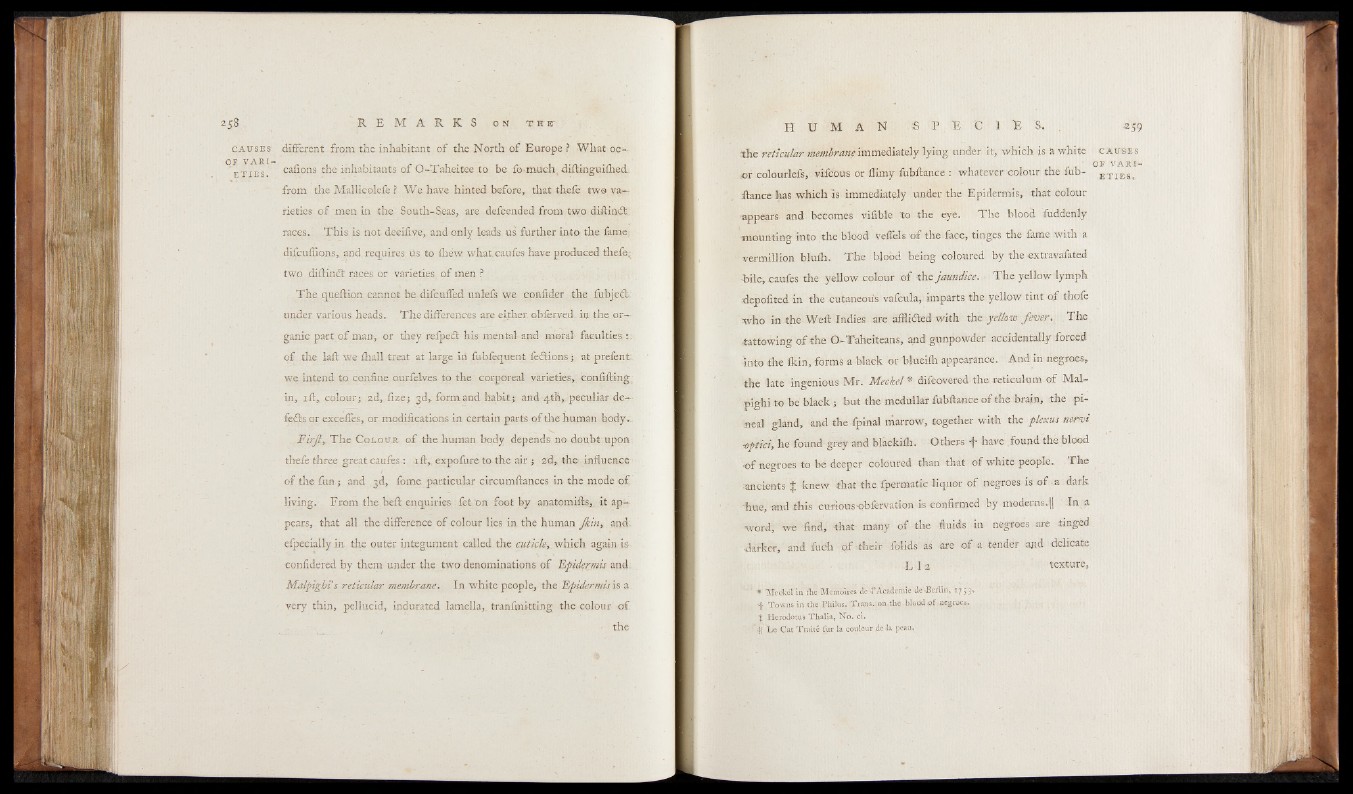
c a u s e s different from the inhabitant o f the North o f Europe ? What o c -
° e t i e s cafions the inhabitants o f O-Taheitee to be fo-much,diftinguiihed.
from the Mallicolefe ? W e have hinted before, that thefe two varieties
o f men in the South-S.eas, are defcended from two diftindt.
races.. This is not de'eifive, and only leads us further into the fame.,
difcufiions, and requires us to ihew what, caufes have produced thefe;
two diftindt races or varieties o f men ?
T h e queftion cannot be difeufled unlefs we confider the fubjedt
under, various heads. T h e differences are either, obferved. in the organic
part o f man, or they refpedt his- mental and moral faculties ::
o f the laft we fhall treat at large id fubfequent fedtion's; at prefent.
we intend to confine ourfelves to the corporeal varieties, confifting.
in, i f f , colour; 2d, fize; 3d, form, and habit; and 4th,;peculiar de—
fedt-s or excefles, or modifications in certain parts o f the human body...
Fuji, Th e C o l o u r o f the human, body depends no doubt upon
thefe"three great caufes : ill,: expofure to the air ;. 2d, the influence
of the fun; and . 3d, feme particular circumftances in the mode o f
living. From the bell enquiries fet On foot by anatomifts,. it appears,
that all the difference of colour lies in the human Jkin, and;,
efpecially in the outer integument called, the cuticle, which again is-
confidered by them under the two denominations o f Epidermis and.
Malpighis reticular membrane. In white people, the Epidermis is a.
very thin, pellucid, indurated lamella,, tranfmitting the colour o f
the reticular membrane immediately lying under it, which is a white
.or colourlefs, vifeous or ilimy fubftance : whatever colour the fub-
itance has which is immediately under the Epidermis, that colour
appears and becomes vifible to the eye. Th e blood fuddenly
mounting -into the blood veftels o f the -face, tinges the fame with a
vermillion bluih. Th e blood being coloured by the extravafated
bile, caufes the yellow colour o f the jaundice. • Th e yellow lymph
-depofited in the cutaneous vafcula, imparts the yellow tint o f thofe
who in the Weft: Indies are afflifted with the yellow .fiver. The
ttattowing of-the O—Taheiteans, and gunpowder accidentally forced
into the fkin, forms a black or blueiih appearance. And in negroes,
rhe late ingenious ]Vlr. Meckel •*• difeovered the. reticulum o f hdal—
■ pighi to be black ; but the medullar fubftance of the brain, the pineal
gland, and the fpinal marrow, together with the plexus nervi
■ optici, he found grey and blackifli. Others -f- have found the blood
•of negroes to be deeper coloured than that o f white people. The
-ancients J knew that the fpermatic liquor of negroes is o f a dark
hue, and this curious-obfervation is confirmed by m o d e r n s I n a.
word', we find, -that- many o f the fluids in negroes are tinged
■ darker, and fuch o f their folids as are o f a tender apd delicate
L l a texture,
» TVIcokcl in flic Mémoires dc l’Academie de -Berlin, 1753- “ ;
Towns in the Philos. -Trans. on -the blood \of negroes,.
Herodotus Thalia, No. ci.
. -41 Le Cat Traité fur la couleur vde la peau.
C AU SE S
OF V A R I E
T IE S ,